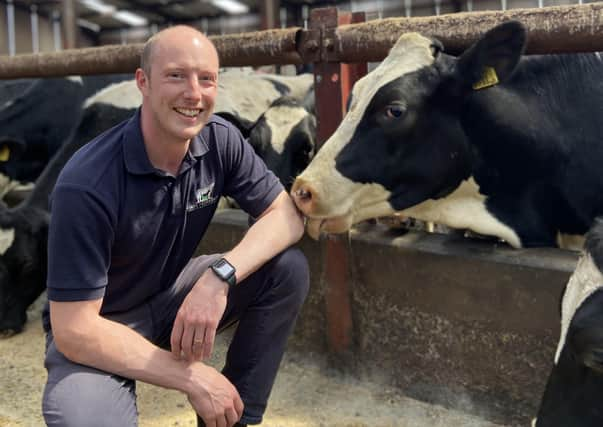To synch for AI with sexed semen or not?


Why use sexed semen in dairy heifers?
Sexed semen (SS) has a 90%+ basis for female offspring, this has numerous benefits
r Reduce the number of dairy bull calves
r Increase the speed of genetic gain, the use of genomics is now cost-effective
Advertisement
Advertisement
r Help maintain herd biosecurity by reducing the number of bought in animals
r Improve herd profitability, better genetic heifers born and more beef calves to sell
What protocol should
be utilised with
sexed semen?
SS generally has slightly lower conception rates than conventional semen and historically the advice has been to only use SS to observed (standing) oestrus.
However, with decreased labour on farm and better synchronisation protocols available the use of FTAI can give acceptable conception rates (CRs).
1) Double Prostaglandin (PGF) injections:
Advertisement
Advertisement
The use of an injection of prostaglandin F2alpha (PGF) repeated at 11 days with fixed time AI (FTAI) at between 72 and 84 hours can be used in heifers. To get the best conception rates (CRs) any animals seen in oestrus should be served as this protocol does not fix the time of ovulation and timing to oestrus will vary depending on the stage of the cycle. Work done in New Zealand showed double PGF had the lowest CR at 31% of the protocols compared. Heifers that are not cycling or prepubertal will have very or no response to PGF injections as they do not have corpus luteum (CL).
2) Other injectable protocols:
Maiden heifers generally have a poor response to injectable protocols such as Ovsynch due to physiological differences between them and lactating animals.
3) Use of a progesterone device:
The addition of a progesterone (P4) device to synchronisation protocols allows better control of the cycle and ovulation (release of the egg). Published data demonstrates a better CR in synchronised animals inseminated with SS compared to animals served to observed oestrus. A progesterone device allows better synchronisation without lengthening the duration of the protocol. P4 is important for many aspects of fertility including oocyte (egg) and embryo quality.
I have collected the CRs from 444 heifers served off differing P4 protocols and also from 522 served to standing heat. All heifers had single service with SS.
Advertisement
Advertisement
Overall, the CR to FTAI protocols was 63.8% and to service at natural heat was 60.1%.
I used three different P4 protocols and all achieved CRs of >60%.
Your farm vet can advise which protocol is most suited for your farm and heifers.
Other important factors to consider
Good management and environmental factors for heifer growth is key to success or otherwise of breeding.
Have the heifers reached puberty?
Advertisement
Advertisement
This is a result of many factors but nutrition is key. They need to have reached an acceptable height and weight for puberty to be achieved. Ideally, they should reach puberty 30 – 60 days before you intend to start serving them.
Your vet can assess their reproductive tract and ascertain if they are cyclic or not. On one farm I was concerned the heifers were not mature enough, but the decision to proceed was made with a resulting CR of 41.4%.
In conclusion, with correct management factors and pubertal status of heifers the use of synchronisation with sexed semen can be a useful tool and provide economic and welfare benefits.
If you are interested in following @AdamConn, @RiadaVets on Twitter or @thevetatthecoast19 on Instagram.